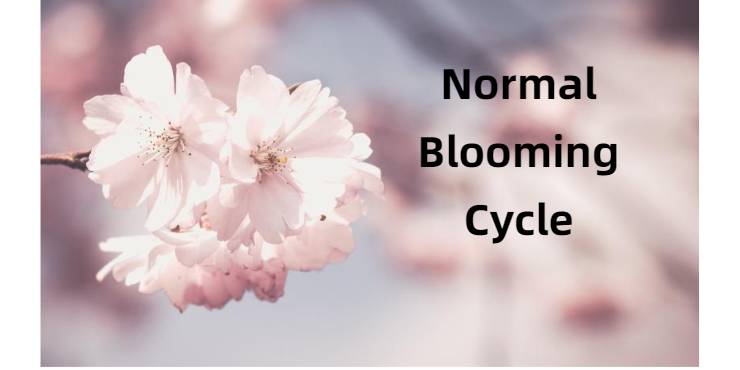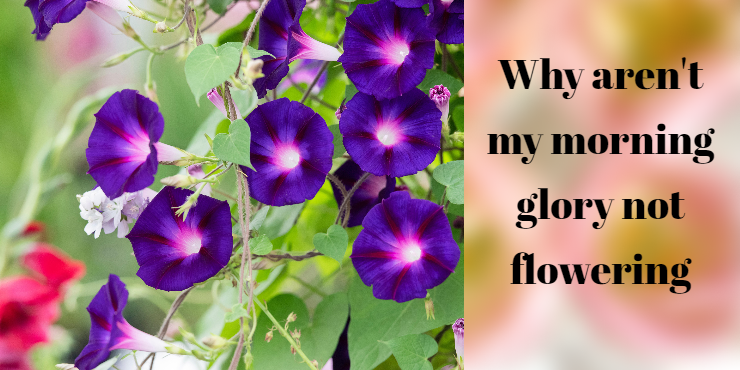Introduction
Morning Glory is a popular plant known for its beautiful, trumpet-shaped flowers that add vibrancy to gardens and landscapes. However, it can be frustrating when your morning glory vines fail to bloom. In this article, we will explore the reasons behind this issue and offer practical solutions to ensure your morning glories bloom beautifully with a riot of colorful blossoms.
The Charm of Morning Glory, not flowering
Ipomoea, commonly known as morning glory, refers to a group of annual or perennial vines that produce beautiful flowers in a range of colors such as blue, purple, pink, and white. They are a popular choice among gardening enthusiasts due to their ability to climb and cover fences, trellises, and arbors with lush foliage and stunning blooms. However, what happens when they fail to live up to their reputation as prolific bloomers?
Understanding Morning Glory not Flowering Blooming Patterns
Before we dive into the reasons for your morning glories’ non-flowering state, it’s essential to understand their blooming patterns.
Normal Blooming Cycle

Morning glory not flowering typically blooms from late spring to early fall, with peak flowering occurring during the summer months. These plants are photoperiodic, which means their blooming is influenced by the amount of daylight they receive. Longer daylight hours signal the plant to produce flowers.
Annual vs. Perennial Varieties
It is important to distinguish between annual and perennial varieties of morning glories. Annual morning glories complete their lifecycle within a single growing season, while perennial types return year after year. Knowing which type you have can help you address blooming problems more effectively.
Reasons Your Morning Glory not flowering Aren’t Flowering
Insufficient Sunlight
Header: Lack of Sunlight
Morning glories are plants that love sunlight and need at least 6 to 8 hours of direct sunlight every day to produce plenty of blooms. If your garden or balcony is not getting enough sunlight, your morning glories may not produce flowers as expected.
Solution:
One solution is to relocate your morning glory vines to a sunnier spot. Also, trim any vegetation that may be blocking the sunlight to ensure your plants get the required amount of sunlight.
Poor Soil Quality

Title: The Importance of Soil Health
Morning glories are known to flourish in soil that is rich in nutrients and has proper drainage. However, if the soil is deficient in essential nutrients or doesn’t drain well, it can impede the blooming process. To overcome this, the solution is to enhance the soil’s quality by adding organic materials such as compost or thoroughly decomposed manure. This will effectively boost the soil’s fertility and its drainage capabilities, ensuring that your plants thrive.
Over-Fertilization
Morning glories are known to benefit from nutrients, but over-fertilizing them can lead to excessive leaf growth, which in turn can hamper flower growth. Therefore, it is advisable to make use of a balanced, slow-release fertilizer, and strictly follow the recommended application guidelines to prevent over-fertilization.
Improper Pruning
Title: Avoiding Pruning Mistakes in Morning Glory Vines
Pruning plays a crucial role in maintaining the health and shape of morning glory vines. Nevertheless, careless pruning may accidentally remove potential flower buds. To avoid this mistake, it is important to prune morning glory vines carefully, removing only dead or damaged growth while preserving potential flowering stems.
Pest Infestations
If you have morning glory plants in your garden, it is important to keep an eye out for unwanted visitors. Pests such as aphids and spider mites can harm the plants and hinder their ability to produce flowers. To prevent this from happening, it is recommended to regularly inspect your plants for signs of pests and take necessary measures, such as using organic pesticides or introducing beneficial insects, to control infestations.
Watering Issues
Finding the Balance: To ensure morning glories bloom, maintain consistent watering to keep soil evenly moist but not waterlogged.
Conclusion
Growing morning glories can be a delightful experience for any gardener. However, if your morning glories are not flowering, there are factors you need to address. Pay attention to sunlight, soil quality, pruning, pests, and watering to ensure abundant blooming. By taking care of these essential aspects, you’ll soon witness your morning glories in their full floral glory.
Frequently Asked Questions (FAQs)
- How long does it take for morning glories to bloom after planting? Morning glories typically start blooming about 50 to 60 days after planting, depending on environmental conditions.
- Can morning glories survive harsh winters? Most morning glory varieties are not frost-tolerant and are best grown as annuals or in warm, frost-free climates.
- Are there any companion plants that can help morning glories flourish? Yes, plants like sunflowers and marigolds can complement morning glories by attracting pollinators and providing a favorable growing environment.
- Should I deadhead spent morning glory flowers to encourage more blooms? Yes, regularly removing faded blooms can encourage your morning glories to produce more flowers throughout the season.
- Can I grow morning glories indoors in pots? Morning glories can be grown in containers indoors, provided they receive ample sunlight and support for climbing.


